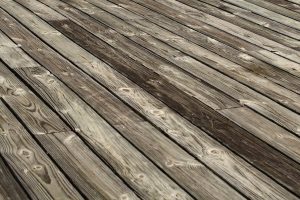
Hardwood flooring often evokes images of grand estates and elaborate designs, but the truth is, simplicity can be just as stunning. Simple hardwood flooring offers a clean, classic look that complements any interior style, while also providing the durability and warmth hardwood is known for.
This article explores the beauty and practicality of simple hardwood flooring, guiding you through selection, installation, and maintenance.
I. The Essence of Simplicity: Defining “Simple” in Hardwood Flooring
- Clean Lines and Minimal Grain:
- Simple hardwood flooring emphasizes clean lines, consistent colors, and less dramatic grain patterns.
- This aesthetic creates a sense of spaciousness and tranquility, making it ideal for both small and large rooms.
- Focus on Functionality:
- Simplicity also translates to ease of maintenance and practicality.
- Choosing durable, easy-to-clean finishes and wood species contributes to a low-maintenance, long-lasting floor.
- Versatility in Design:
- Simple hardwood flooring acts as a neutral canvas, allowing for flexibility in furniture and décor choices.
- It seamlessly integrates with various design styles, from Scandinavian minimalism to classic contemporary.
II. Selecting Your Simple Hardwood: Species, Grades, and Finishes
- Wood Species for Simplicity:
- Maple: Its light color and subtle grain make it a popular choice for a clean, modern look.
- Oak (White Oak): Offers a more subdued grain than red oak, with neutral tones that blend well with various styles.
- Ash: A light colored and durable wood that has a visible but not overly dramatic grain.
- Grades for Uniformity:
- Select or select and better grades offer a more consistent appearance with fewer knots and color variations.
- These grades create a clean, uniform look that aligns with the principles of simplicity.
- Finishes for Ease and Durability:
- Matte or satin finishes minimize glare and highlight the natural beauty of the wood without being overly showy.
- Durable finishes like polyurethane or aluminum oxide offer easy cleaning and long-lasting protection.
III. Installation Made Easy: Streamlining the Process
- Plank Width and Layout:
- Wider planks create a more spacious and seamless look.
- Straightforward layouts, such as parallel or diagonal installations, contribute to a clean, uncluttered aesthetic.
- Floating Floors for Simplicity:
- Floating engineered hardwood floors offer a relatively simple installation process.
- This method avoids the need for nailing or gluing, making it a good option for DIY enthusiasts.
- Professional Expertise:
- While simple in concept, proper installation is still vital. A professional installer will ensure a level, stable and beautiful floor.
IV. Maintaining Simplicity: Easy Care for Lasting Beauty
- Regular Cleaning:
- Sweep or vacuum regularly to remove dust and debris.
- Damp mop with a pH-neutral cleaner designed for hardwood floors.
- Preventing Damage:
- Use furniture pads to prevent scratches and dents.
- Maintain consistent humidity levels to minimize warping and gapping.
- Avoid excessive water.
- Refinishing Considerations:
- Solid hardwood floors can be refinished many times, but engineered floors can only be refinished a few times.
V. The Benefits of Simplicity: A Lasting Investment
- Timeless Appeal:
- Simple hardwood flooring transcends trends, ensuring a lasting and elegant look.
- Increased Home Value:
- Hardwood floors, even in their simplest form, add significant value to a home.
- Easy Living:
- The low-maintenance nature of simple hardwood flooring contributes to a relaxed and comfortable lifestyle.
Conclusion:
Simple hardwood flooring offers a perfect balance of elegance, practicality, and ease. By choosing the right species, grades, and finishes, and following simple installation and maintenance guidelines, you can create a beautiful and lasting floor that enhances the beauty and comfort of your home.
